Soybean Population x Fungicide
The purpose of this project was to demonstrate varietal response to population and genetic response to fungicide application and to determine if ROI increases when populations are increased and a fungicide is applied.
Project Design
Trial was planted on May 24th, 2020 and harvested October 9, 2020. Soybeans were no-till planted into corn stubble with a 35’ John Deere Air Seeder. Soil type in the field was a Perth clay loam. All varieties were treated with a Group 28 (Diamide) Insecticide + VibranceMaxx Fungicide.
Field Layout
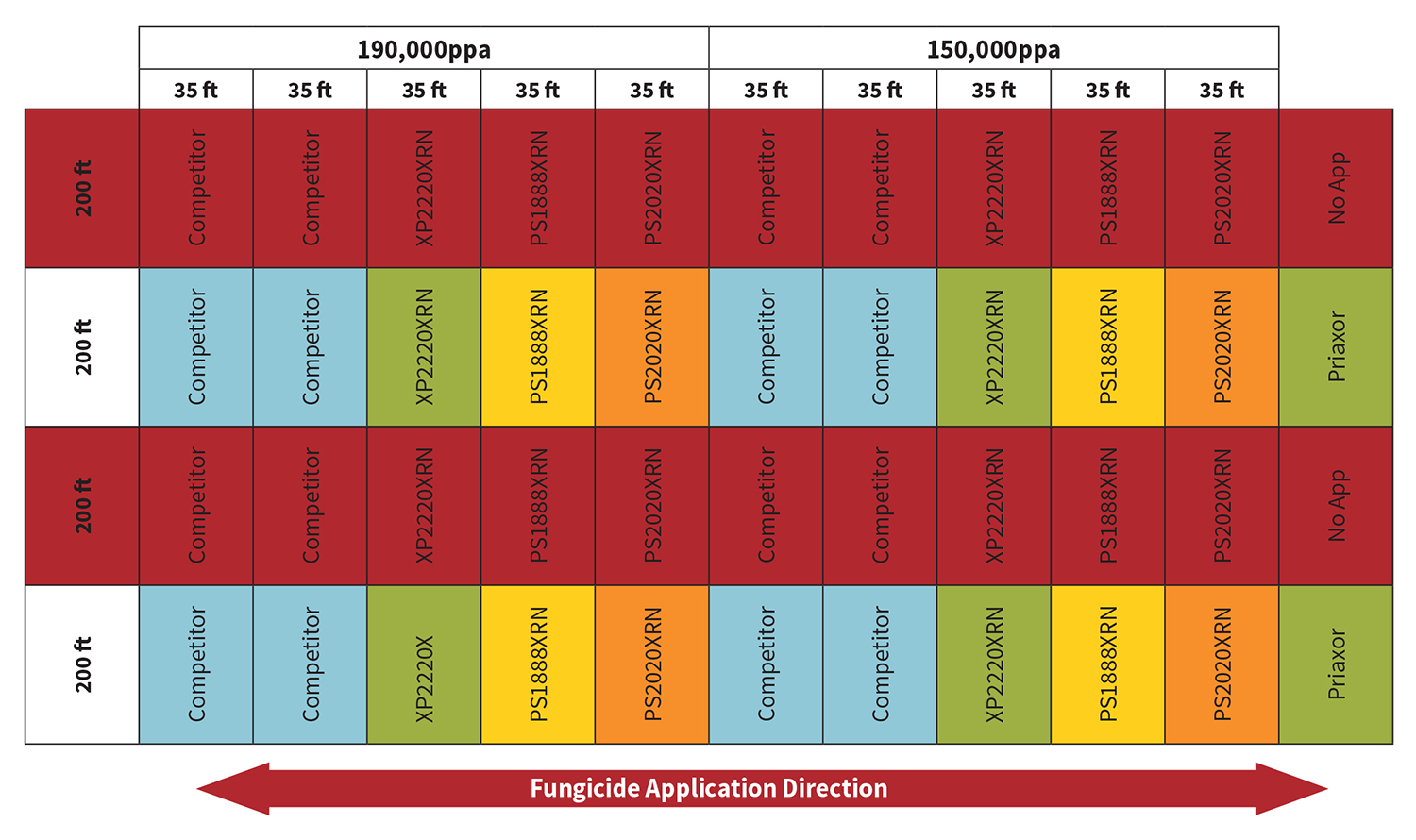
Results
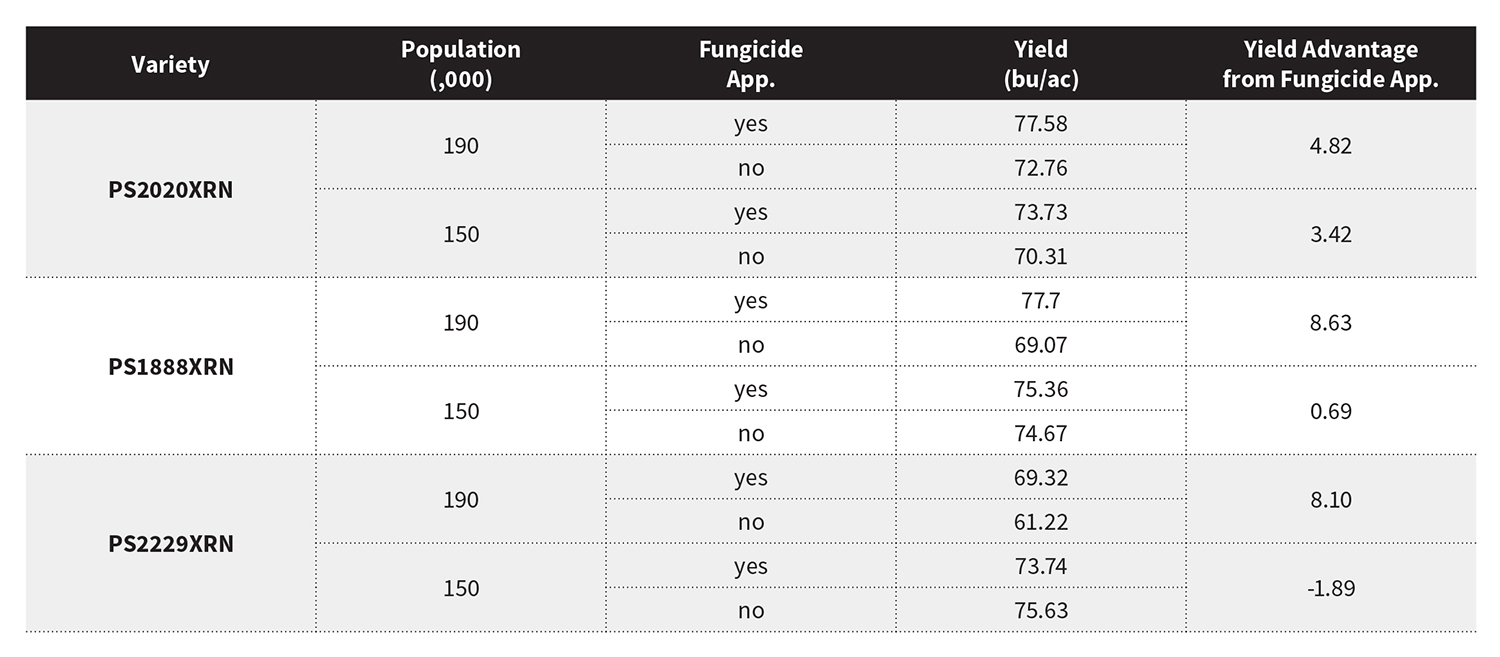
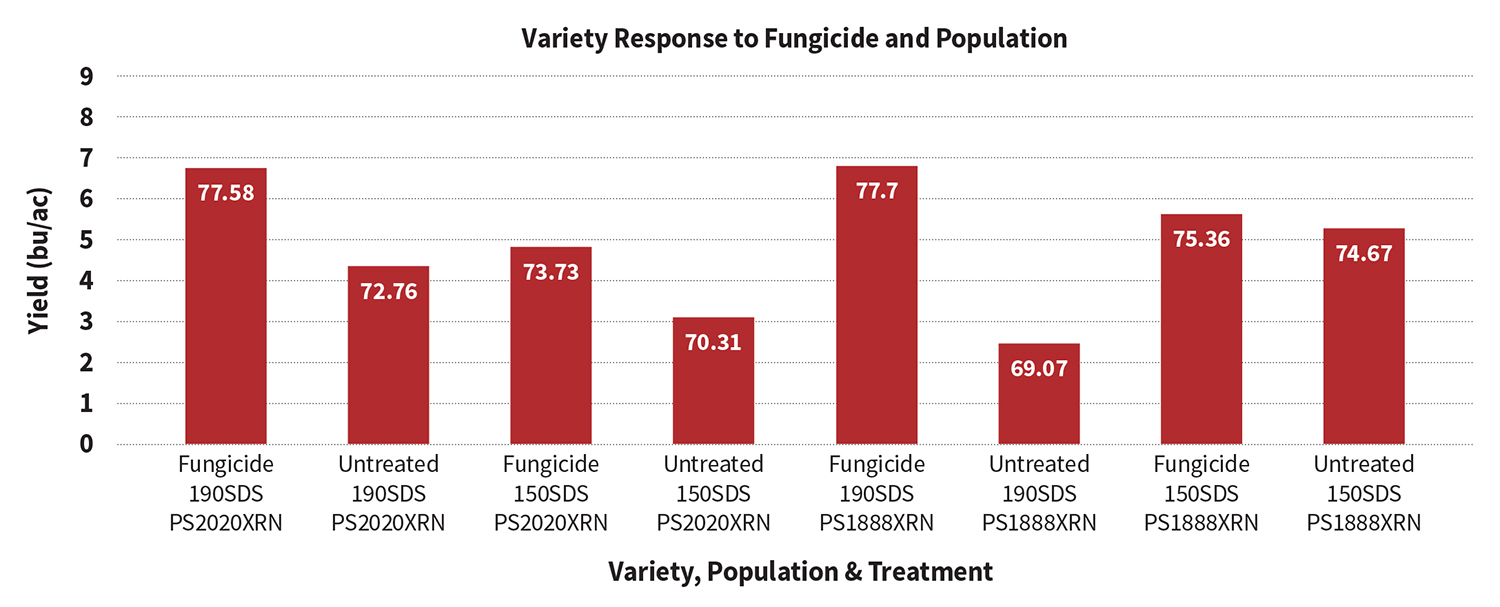
In the 2020 growing season we saw consistent response to fungicide application over different plant profiles and maturity groups. Some of the greatest response was at higher populations as the stand was more consistent and we had more nodes per acre to protect.
PS1888 XRN have achieved maximum ROI at lower populations with there ability to branch out and ‘flex’ to the environment.
PS 2020 XRN are a slender plant style and very ‘fixed’ in nature. Pushing populations on this variety is warranted to achieve max yields.
PS2020 XRN - Multi-year data
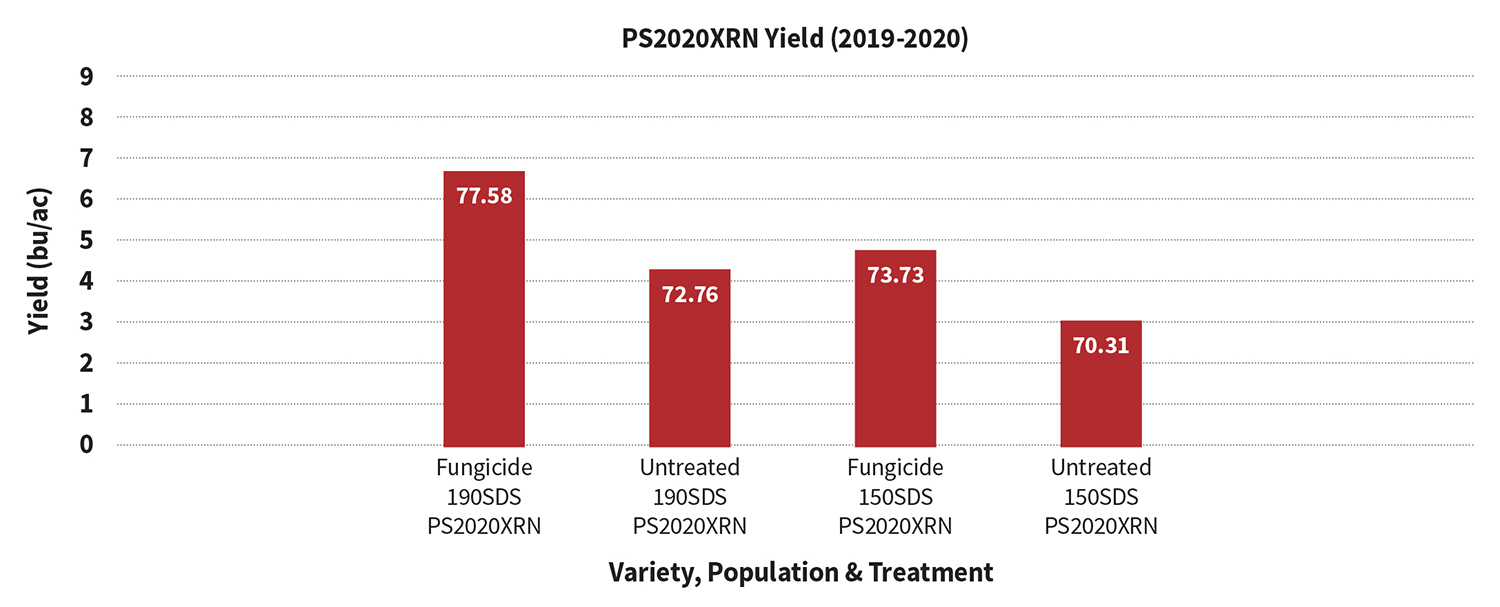
Consistent response to fungicide application. With slender profiled, more ‘fixed’ plant style varieties we are able to gain more on fungicide applications as we push to extend the grain fill period, increasing seed size and weight. Multi-Year data has shown nice economic returns to applying a fungicide to PS2020XRN at high, and more moderate populations.
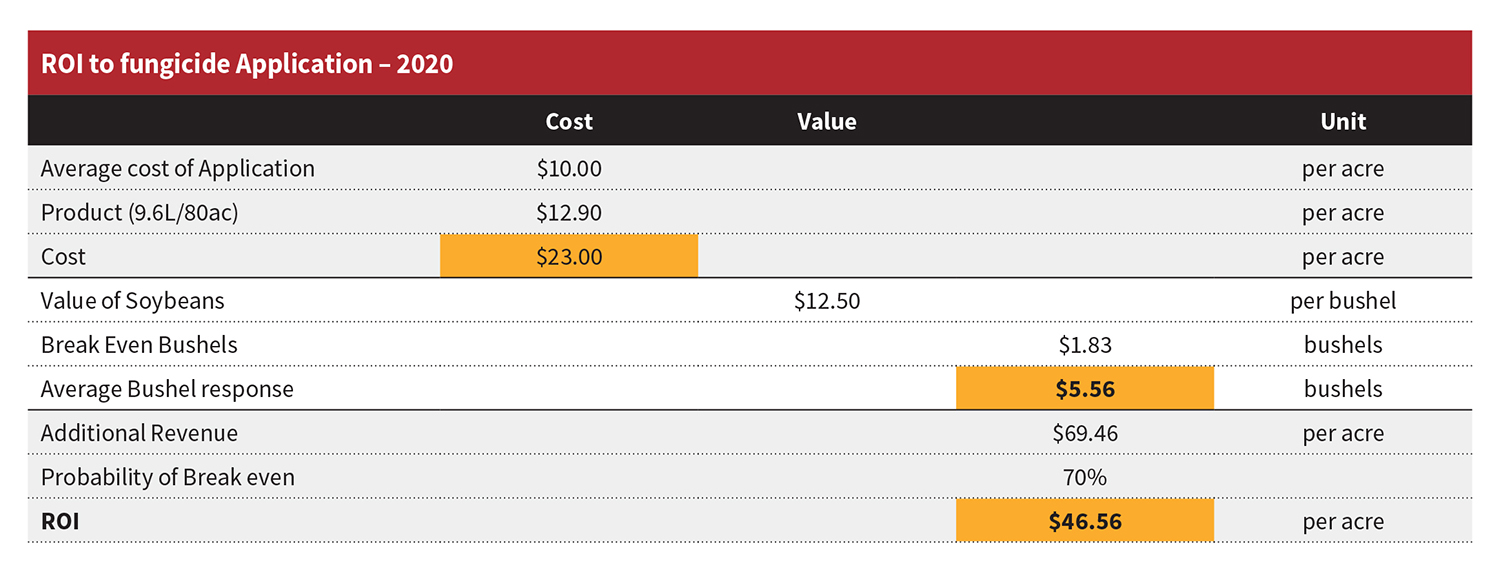
Average response to fungicide application was 5.5bu across 5 varieties in 2020. Current market process warrant value in protecting investment and maximizing profitability per acre. 2-year data, utilizing PS2020XRN as our offensive and PS1888XRN as our defensive benchmark varieties have demonstrated a positive response to applying a fungicide more than 70% of time.
Conclusion
This project study showed positive responses across all varieties.
PS2020XRN has showed multiple years of consistent ROI response at 150,000 plant population. Data from 2019 showed that a fungicide application resulted in average 4.6bu/ac yield increase and 2020 data showed an average 3.4bu/ac yield increase.
Fungicide applications can provide good ROI even at lower crop prices. Average yield increase in 2019 was 2.6 bu/ac and 5.56 bu/ac in 2020 (2019 application date was ~8 days earlier than the 2020 planting date). An open fall allowed soybean varieties to add seed size and maximize late season rains. Fungicide application correlated to more even and consistent leaf drop and avoided premature senescence from late season stresses. Both growing seasons experienced timely rain and favourable growing conditions under medium soil fertility levels. Differences in population response correlate to consistency of stand, and leaf surface area available for absorption.
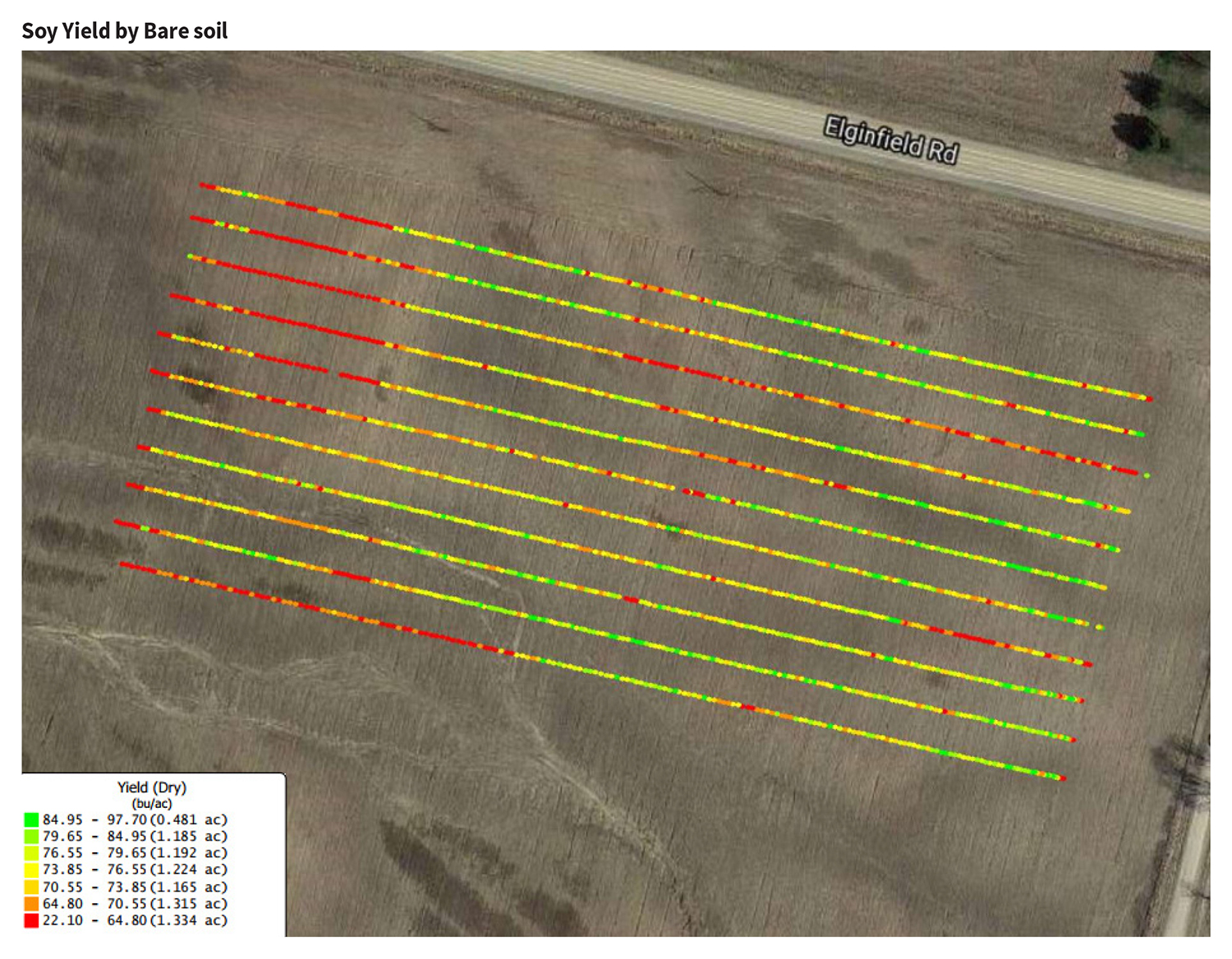
Click here for the PDF of this project and the rest of the PRIDE Seeds 2020 Agronomy Projects

